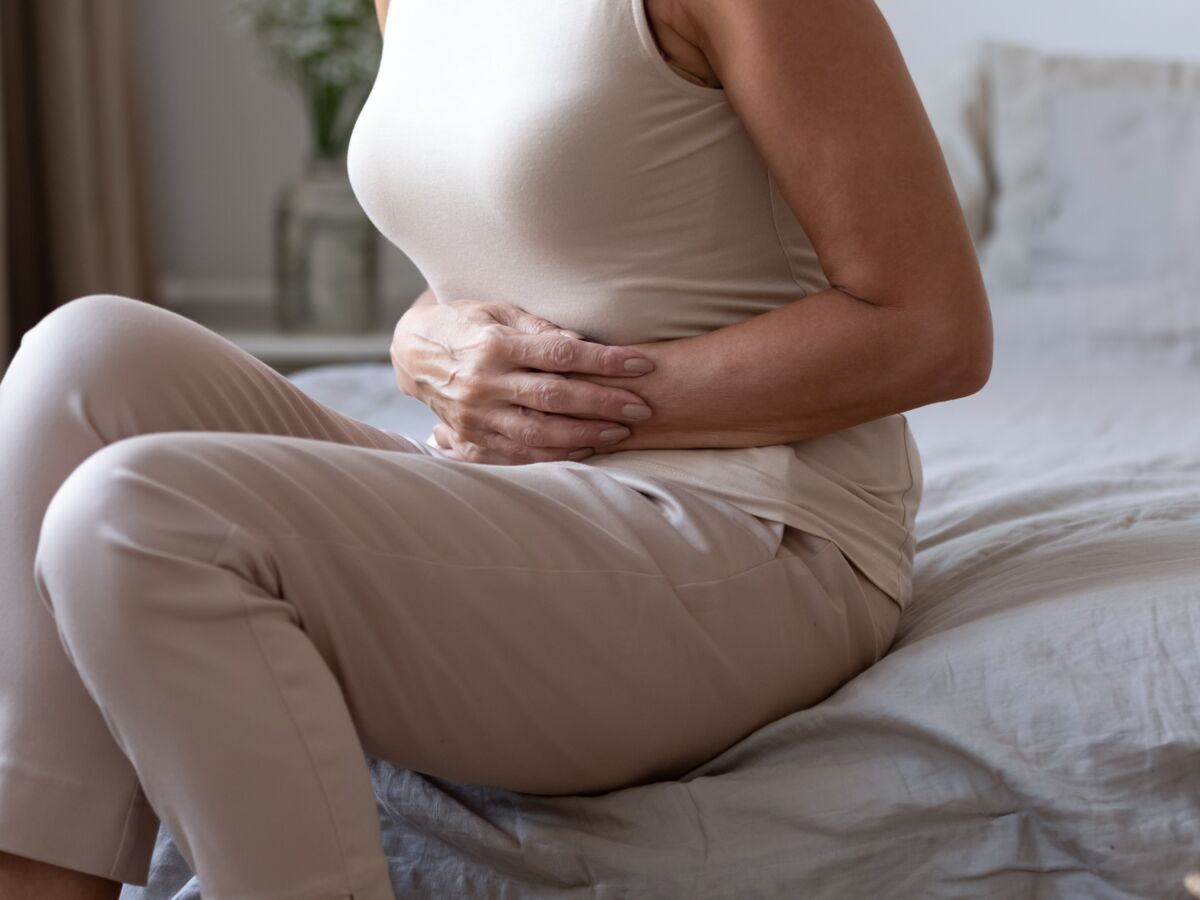Uncomfortable tightness, or sometimes even downright painful, brutal or throbbing cramps, this pain in the lower abdomen can be occasional or cyclical and return every month. They can also arise once menopause sets in. Whatever your symptoms, remember to consult to find their origin and start the appropriate treatment.
In pre-menopause: our hormones are to blame
The body prepares for the permanent cessation of periods which occurs on average 5 years later. This period is marked by a certain hormonal anarchy.
Overly active ovaries
Hyperestrogenism, an increase in the level of estrogen compared to that of progesterone, strongly stimulates the ovaries which can then produce several eggs (up to 3, even 4) instead of just one. “The pain is very strong, sudden and fleeting, and can return every month, generally in the middle of the cycle, and last 24 hours.“, notes Dr Geoffroy Robin, medical gynecologist at Lille University Hospital.
The treatment
Progesterone-based contraception (micro-pill or implant), without estrogen, which acts by blocking ovulation. In rarer cases, the gynecologist may suggest Luteran®, a macroprogestin. Monitoring is then closer due to a rare but real risk of meningioma, a benign brain tumor that can appear in the first year following treatment. A control brain MRI is therefore prescribed after one year. If no abnormality is noted, treatment can be continued for 4 years.
A growing fibroid
This triggers discomfort, even pain. More seriously, by gaining volume, the fibroid can, in certain cases, compress its nourishing vessels. Deprived of oxygen, it then undergoes internal necrosis (necrobiosis), resulting in very severe pain.
The treatment
In the event of necrobiosis, analgesic medications are necessary, or even temporary hospitalization until the pain stops. A myomectomy (removal of the fibroid) or a hysterectomy (removal of the uterus) may be necessary in the event of a large fibroid.
Endometriosis or adenomyosis who wake up
The first is characterized by the presence, outside the uterine cavity, of tissue similar to that of the lining of the uterus (called endometrium). The second is a specific form of endometriosis, which is located in the uterine muscle. These diseases, which generally appear at the first period or in young women, are punctuated by the cycle and risk being intensified during perimenopause.
The treatment
“It is appropriate to smooth out hormonal fluctuations, by blocking estrogen secretions and ovulation: with Diénogest® as first intention or, in case of failure, Luteran®“, notes our expert.
At menopause: “mechanical” complications
Once menopause sets in, pain is no longer caused by hormonal fluctuations. But new causes of discomfort may appear.
A cyst on the ovaries
It can cause tightness in the lower abdomen, or even bleeding.
The treatment
“These symptoms should lead you to consult quickly. to perform a control ultrasound. In very rare cases, the cyst may be precancerous or cancerous and a rapid diagnosis is required. But most often it is benign. If it is very large, surgical removal under laparoscopy can be proposed“, specifies the gynecologist.
Organ prolapse or descent
Due to hormonal deficiency, the muscles and ligaments of the small pelvis can become loose. The gynecological organs, less well supported, risk “falling”. This does not cause pain strictly speaking, but rather discomfort, a feeling of heaviness in the lower abdomen, incontinence.
The treatment
The answer depends on the importance of the ptosis: perineal rehabilitation or wearing a pessary (intravaginal device which exerts pressure on the walls of the vagina and thus raises the gynecological organs) are generally sufficient. But some larger prolapses may require pelvic-perineal reconstruction surgery.
It’s not always gynecological!
The female pelvis contains numerous organs (bladder, uterus, colon, etc.) and is very richly innervated. Some pelvic pain can be triggered by non-gynecological causes such as cystitis, colopathies or osteoarticular problems (blockages of the sacroiliac or pubic symphysis, osteoarthritis of the hip, etc.). The answers will therefore be appropriate: antibiotics, modification of diet, osteopathy, herbal medicine, etc.
Plants to the rescue
Certain plants, called “progesterone like”, can help counterbalance the hyperestrogenism of perimenopause: mainly chasteberry, lady’s mantle and yam root. They must be taken in the second part of the cycle, after ovulation, for a period of 3 to 6 months. Ask a health professional or naturopath for advice.
To read : The Terre Vivante Guide to Women’s Health by Helga Ell-Beiser.
Read also :
⋙ Ovarian pain: symptoms that should prompt you to consult
⋙ Pain in the vagina: what are the possible causes?
⋙ Endometriosis: our readers share their fight against the disease and their tips for living better with it
